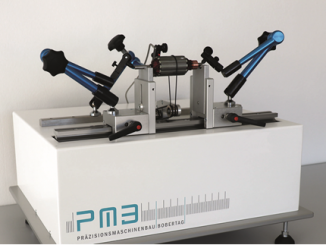
Exports of rare earth magnets from China have become key targets in the growing tariffs war between the USA and China. The latest developments represent a dramatic escalation in the focus on magnetic rare earth materials – especially heavy rare earths — as a potent tool in trade policy and have heightened attention globally to the issue of China’s dominance in the global supply chain.
- According to a report in the New York Times on April 13, China has suspended exports of a wide range of critical minerals and magnets, threatening to choke off supplies of components central to automakers, aerospace manufacturers, semiconductor companies and military contractors around the world.
- On April 14, the Japan Times quickly echoed the New York Times reports.
- According to a report by The Center for Strategic & International Studies (CSIS) in Washington, DC, the new restrictions apply to 7 of 17 rare earth elements—samarium, gadolinium, terbium, dysprosium, lutetium, scandium, and yttrium—and requires companies to secure special export licenses to export the minerals and magnets. This morning the center held a press briefing on the situation.

In a call-in press briefing held today at 10:35 am EDT, the CSIS gave its latest take on the situation. A number of key points were explained by Gracelin Baskaran, Director of the Critical Minerals Security Program, and other leaders at CSIS:
“These export restrictions are targeted at the heavy rare earths and this is really significant because China processes near a hundred percent of heavy rare earth. So we are particularly vulnerable. We currently do not have any capabilities to do this domestically,” said Baskaran.
Over the last five years the U.S. government, through the Defense Production Act, has spent over $400 million to build these capabilities in the U.S. However, they are not finished, which means that we are now at a critical chokehold. It’s important to acknowledge a few things about these restrictions, she noted.
“First of all, they’re not actually a ban. There’s a runway of export policies and they generally start with something we call nonautomatic licensing. Nonautomatic licensing means you need to apply to get a license to export said good. Then you have quotas, you have tariffs, and then the final, like, level of restriction is a full-out ban.”
“These restrictions are on the light end. However, there’s a few implications,” explained Baskaran:
- The first is that the licensing system hasn’t been rolled out, so there will be a pause – we expect 30 to 60 days – while the permitting system gets rolled out.
- The second is that along with these restrictions came out restrictions that place 16 U.S. firms on an export-control list, which limits them from getting dual-use goods. And 15 of the 16 are defense and aerospace industry. Having rare earths are absolutely vital for our defense. They are used in everything from F-35 fighter jets to Arleigh Burke destroyers to Virginia-class submarines to Tomahawk missiles.”
- And finally, a licensing system can be dynamic. So there’s something static and firm about a ban, but a licensing system means that licensing can be changed, which – so I could give, you know, X amount of licenses to firms with American – that, you know, are ultimately end use in America, but I can reduce that number over time.
According to the New York Times report, shipments of the magnets, essential for assembling everything from cars and drones to robots and missiles, have been halted at many Chinese ports while the Chinese government drafts a new regulatory system. Once in place, the new system could permanently prevent supplies from reaching certain companies, including American military contractors. The crackdown is part of China’s retaliation for President Trump’s sharp increase in tariffs that started on April 2.
On April 4, the Chinese government ordered restrictions on the export of six heavy rare earth metals, which are refined entirely in China, as well as rare earth magnets, 90 percent of which are produced in China. The metals, and special magnets made with them, can now be shipped out of China only with special export licenses. The restrictions apply to countries widely, not just the U.S.
But China has barely started setting up a system for issuing the licenses. That has caused consternation among industry executives that the process could drag on and that current supplies of minerals and products outside of China could run low. Companies vary widely in the size of their emergency stockpiles for such contingencies, so the timing of production disruptions is hard to predict.
Michael Silver, CEO of chemicals supplier American Elements in Los Angeles, told the Times that his company had been told it would take 45 days before export licenses could be issued and exports of rare earth metals and magnets would resume. Silver said that his company had increased its inventory last winter in anticipation of a trade war and could meet its existing contracts while waiting for the licenses.
In a potential complication, China’s Ministry of Commerce, which issued the new export restrictions jointly with the General Administration of Customs, has barred Chinese companies from having any dealings with an ever-lengthening list of American companies, particularly military contractors.
While the exports are being blocked to countries widely, not just the U.S., enforcement has varied at different Chinese ports, according to the Times report.
CSIS analysts note that the new restrictions are not a ban; rather, they require firms to apply for a license to export rare earths. The implications are three-fold. First, there will likely be a pause in exports as the Chinese government establishes this licensing system. Second, there is also likely to be disruptions in supply to some U.S. firms given that the announcement also placed 16 U.S. entities on its export control list, limiting them from receiving dual-use goods. All but one of the firms on the list are in the defense and aerospace industries. It is unclear how China will implement the new licensing system. And third, the licensing system may be dynamic and could incentivize countries across the world to cooperate with China to prevent disruptions in their rare earths supply.
For more info, see www.nytimes.com and www.csis.org.



